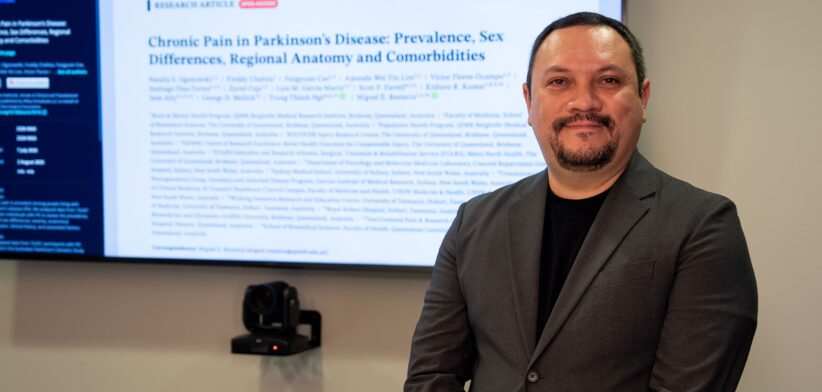People living with Parkinson’s disease are nearly three times more likely to suffer from chronic pain compared to the general community.
QIMR Berghofer Associate Professor Miguel Rentería, who led the major study which made the discovery, said it was common for patients with Parkinson’s to report pain, but there was a lack of data about the issue.
Associate Professor Rentería said the study was the first time the extent and severity of chronic pain had been measured on such a large scale in Parkinson’s disease.
He said it highlighted the urgent need to treat this issue alongside motor symptoms such as tremors, to improve the quality of life of patients.
“Chronic pain is a symptom that is often underrecognised, underdiagnosed and undertreated, and it really impacts the quality of life of people living with Parkinson’s disease.
“Previous studies were done in only small groups of people so there was a need for more evidence.”
Associate Professor Rentería said, in this study, researchers analysed data from 10,631 participants in the Australian Parkinson’s Genetics Study (APGS) which was led by QIMR Berghofer and funded by the Shake It Up Australia Foundation and the Michael J. Fox Foundation for Parkinson’s Research.
He said two-thirds of study participants (66.2 per cent) reported chronic pain, defined as pain that persists for more than three months and occurs every day or most days, which was significantly higher than the general population of a similar age, where the prevalence of pain was estimated at 23 percent in men and 30 percent in women.
“The study found pain was more common and more severe in women, with 70.8 percent of female participants experiencing pain compared to 63.5 percent of men.”
Associate Professor Rentería said the most common body sites affected were the buttocks (35.6 percent), lower back (25.4 percent), neck (19.4 percent) and knees (17.2 percent).
He said the research also highlighted the major impact that pain had on the quality of life of participants, affecting mobility, sleep, independence and emotional wellbeing.
Neurologist Dr Kishore Kumar, a co-author on the paper and researcher at the Garvan Institute of Medical Research, said the findings raised awareness about the need to spend time in the clinic asking patients directly about pain.
“As clinicians, we are often focused on the motor symptoms of Parkinson’s but we need to make sure we are not neglecting the non-motor symptoms like pain so we can treat that aspect of the disease and improve the lives of patients with Parkinson’s,” Dr Kumar said.
Shake It Up Australia Foundation CEO Vicki Miller said the results highlighted a long-standing gap in Parkinson’s care.
“Many people with Parkinson’s suffer in silence. Pain is invisible, but it’s real and this research finally gives us the numbers to back what the community has been saying for years,” Ms Miller said.
Read the full study: Chronic Pain in Parkinson’s Disease: Prevalence, Sex Differences, Regional Anatomy and Comorbidities








